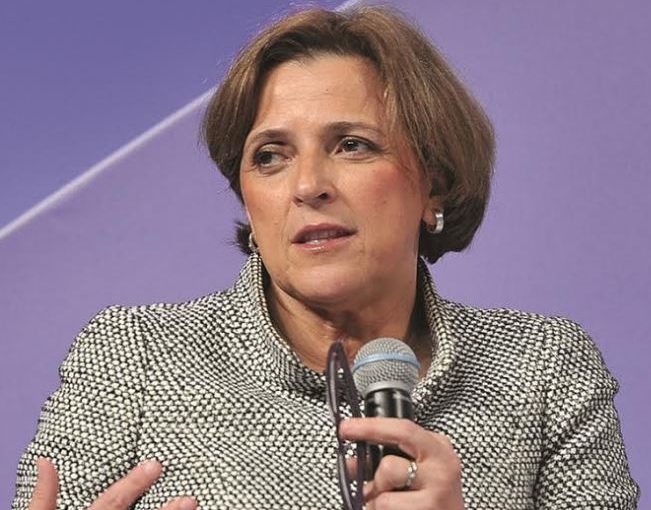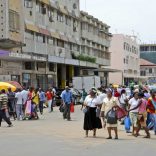Fisheries: Mozambique sets dates for 2025–2026 closed seasons
Markets seem to approve the new Barclays Africa

Caption: "We have a unique opportunity to determine our own destiny", insists Mario Ramos, CEO Barclays Africa. (Odgers Berndtson)
“This is a critical time for Barclays Africa,” says Maria Ramos, CEO of Barclays Africa, in a press release published today, one day after the announcement of the sale by Barclays Plc (in London) of its 33.7% share in the African bank. “We have a unique opportunity to determine our own destiny and take our own decisions over what’s best for a business with a pan-African focus,” adds the chief executive.
Yesterday, Barclays Plc announced the sale of close to 286 million shares (33.7%) at a price of ZAR132 per share (amounting to about $2.7 billion), resulting in a remaining participation of 23.4% with an additional sale of 7% to the South African Government-owned Public Investment Corporation, the largest pension fund manager in Africa (currently the second largest shareholder in Barclays Africa with equity of just under 7%).
Demand by investors, both African and international, was strong, and shares on offer over-subscribed. Barclays Africa shares (BAG:SJ) soared a little more than 5% yesterday in Johannesburg to ZAR14.6. The market was surprised that the British bank sold more than the 22% initially announced, the bank explaining that demand on behalf of investors was particularly strong.
For years, since the first announcement in 2013 by Barclays Plc to quit its African operations, both parties – Barclays Africa and Barclays Plc – have been communicating intensively about the reason for the sale. For its part, the British financial institution had little choice, as new regulations in Europe and the United States, where it plans to reinforce it presence, force it to strengthen its capital ratios.
“We are done restructuring,” Barclays CEO, Jes Staley, told the Financial Times. “What that does to employee morale and in terms of aligning the company’s interests with shareholders’ interests is really significant. This is going to be a seminal change at this bank,” he explained.
As for Barclays Africa, the communication focus was more directed at the bank’s clients, who may worry about potential changes in the services that they currently get from their bank. Last week, during a trip to the institution’s headquarters in Johannesburg, Maria Ramos insisted that “nothing will change for our clients, unless for the better“, also underscoring the strong capital position of the bank – with a balance sheet of more than a ZAR trillion (~$71 billion) – and its conservative approach to credit and loans, so that funding and liquidity are not at risk.
According to Maria Ramos, investors reacted positively to the operation. “This transaction demonstrates exceptionally high investor appetite for Barclays Africa and their recognition of our strategy of becoming a leading and autonomous financial services group in Africa,” she said.
However, with its residual interest in the African banking group, Barclays Plc remains a substantial shareholder in Barclays Africa, which will enable it to support its African partner, if needed, during the deconsolidation process. Also, as Maria Ramos told Club of Mozambique last week in South Africa, none of its African branches will suffer changes nor be sold after Barclays Plc’s equity sale.
Also, as announced last February, Barclays Plc will share the cost of this deconsolidation, disbursing about ZAR12 billion (U$857 million) in technology and the costs associated with the change of the brand in Africa, Barclays Africa eventually abandoning the “Barclays” name. “Such a process presents an opportunity to accelerate the modernization and streamlining of Barclays Africa, including in Mozambique,” the African bank says.
All staff and shareholders from the 12 banks that form Barclays Africa will remain in place after the transaction. They will continue to serve more than 12 million customers through their operations in Kenya, Zambia, Botswana, Tanzania, Mozambique and Ghana, among other countries.
In Mozambique, Barclays posted an increase of almost 90% of its net profit last year to MZM575 million ($9.7 million) thanks, in part, to a strategy focused on the higher-margin corporate segment, which has prevented the bank from adopting the too-cyclical approach to loans which has resulted in the failure of many systemic financial services group in the African continent during the last few years. This positioning strategy also helped the bank maintain a far higher solvency ratio (22.5%) than the regulatory minimum requirements (8%).












Leave a Reply
Be the First to Comment!
You must be logged in to post a comment.
You must be logged in to post a comment.